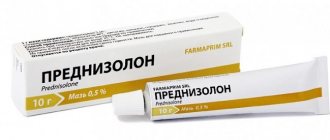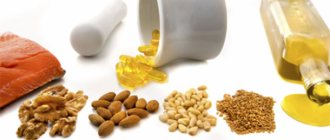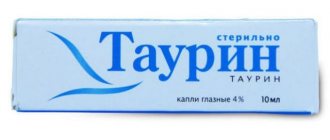| This article violates the rule against instructions in encyclopedia articles. Its text almost completely repeats the instructions for use of the drug provided by its manufacturer. In addition, the data provided may not be sufficiently objective and reliable (especially regarding the effectiveness and safety of the drug). To maintain neutrality of presentation, it is necessary to rework this article based on independent authoritative sources of information. |
| Prednisolone | |
| Prednisolone | |
| Chemical compound | |
| IUPAC | (11-β)-11,17,21-trihydroxypregna-1,4-diene-3,20-dione |
| Gross formula | C21H28O5 |
| Molar mass | 360.444 g/mol |
| CAS | 50-24-8 |
| PubChem | 5755 |
| DrugBank | APRD00197 |
| Classification | |
| ATX | A07EA01, C05AA04, D07AA03, D07XA02, H02AB06, R01AD02, S01BA04, S01CB02, S02BA03, S03BA02 |
| Pharmacokinetics | |
| Half-life | 2-3 hours |
| Dosage forms | |
| tablets, eye drops, ointment for external use, lyophilisate for the preparation of solution for intravenous and intramuscular administration, solution for intravenous and intramuscular administration, suspension for intramuscular administration | |
| Other names | |
| Decortin H20, Decortin H5, Decortin H50, Medopred, Prednisol, Prednisolone, Prednisolone hemisuccinate, Sol-Decortin H25, Sol-Decortin H250, Sol-Decortin H50 | |
| Media files on Wikimedia Commons | |
Prednisolone
(lat. Prednisolonum) - a synthetic glucocorticoid drug of medium strength, white crystalline powder, m.p. 240-241 (with decomposition), [al 5° = -f 102 (in dioxane) its acetate melts at 237-239 (with decomposition) and has [a]25″ = -f-Ib (in dioxane). [1]
The synthesis and study of cortisone analogues and derivatives has led to a number of interesting compounds that are used in medicine. These include hydrocortisone (I), prednisone (II), prednisolone (III), etc.[1]
Compound
Composition of Prednisolone in ampoules: active substance at a concentration of 30 mg/ml, as well as sodium pyrosulfate (additive E223), disodium edetate, nicotinamide, sodium hydroxide, water for injection.
Composition of Prednisolone tablets: 1 or 5 mg of active substance, colloidal silicon dioxide, magnesium stearate, stearic acid, starch (potato and corn), talc, lactose monohydrate.
Prednisolone ointment contains 0.05 g of active substance, soft white paraffin, glycerin, stearic acid, methyl and propyl parahydroxybenzoate, Cremophor A25 and A6, purified water.
pharmachologic effect
Pharmacological group: Corticosteroids (drug group - I, this means that prednisolone is a weakly active GCS).
Prednisolone - hormonal or not?
Prednisolone is a hormonal drug for local and systemic use with an average duration of action.
It is a dehydrated analogue of the hormone hydrocortisone . Its activity is four times higher than the activity of hydrocortisone.
Prevents the development of an allergic reaction (if the reaction has already begun, it stops it), suppresses the activity of the immune system , relieves inflammation, increases the sensitivity of β2-adrenergic receptors to endogenous catecholamines, and has an anti-shock effect.
Pharmacodynamics and pharmacokinetics
Pharmacodynamics: Prednisolone - what is it?
The mechanism of action of Prednisolone is associated with its ability to interact with certain intracellular (cytoplasmic) receptors. These receptors are found in all tissues of the body, but most of them are in the liver.
As a result of this interaction, complexes inducing the synthesis of proteins (including enzymes that regulate vital intracellular processes) are formed.
Acts at all stages of development of the inflammatory process: suppresses the synthesis of Pg at the level of arachidonic acid, and also prevents the formation of pro-inflammatory cytokines - IFN-β and IFN-γ, IL-1, TNF, neopterin; increases the resistance of plasma membranes to damaging factors.
It affects the metabolism of lipids and proteins, and also, to a slightly lesser extent, the exchange of water and electrolytes.
The immunosuppressive effect is realized due to the ability of the drug to cause involution of lymphoid tissue , inhibit the proliferation of lymphocytes , migration of B cells, and the interaction of B and T lymphocytes , inhibit the release of IFN-γ, IL-1 and IL-2 from macrophages and lymphocytes , reduce the formation antibodies .
Inhibition of the allergic reaction is carried out by reducing the secretion and synthesis of mediators.
em>, suppression of
antibody , changes in the immune response.
Inhibits the synthesis and secretion of corticotropin and, secondarily, endogenous corticosteroids.
When applied externally, it relieves inflammation, inhibits the development of an allergic reaction , relieves itching and inflammation, reduces exudation , and suppresses the activity of the immune system in relation to type III-IV hypersensitivity reactions.
Pharmacokinetics
After taking the tablet, it is quickly and completely absorbed from the gastrointestinal tract. TSmax - from 60 to 90 minutes. Up to 90% of the administered dose of prednisolone is bound to plasma proteins.
The substance undergoes biotransformation in the liver. From 80 to 90% of metabolic products are excreted in urine and bile, about 20% of the dose is eliminated in its pure form. T1/2 - from 2 to 4 hours.
GENERAL CHARACTERISTICS AND MECHANISMS OF ACTION OF HA
The production of cortisol by cells of the adrenal cortex is directly regulated by adrenocorticotropic hormone (ACTH) of the anterior pituitary gland and indirectly by corticotropic hormone (corticoliberin) of the hypothalamus, which enhances the secretion of ACTH. Regulation of GC synthesis occurs according to the principle of negative feedback: an increase in cortisol levels or the introduction of synthetic GCs causes a decrease in ACTH secretion. This rapid and prolonged process leads to inhibition of the synthesis of both ACTH and corticoliberin. However, in healthy people, stressful stimuli overcome the influence of feedback. Important factors that stimulate the release of ACTH and GC are pro-inflammatory cytokines (IL-1 and IL-6); in turn, GCs suppress the synthesis of these cytokines. Thus, the cytokine-mediated increase in GC secretion is a component of the body’s normal response to stress (including antigenic) stimuli, and this process is controlled through a negative feedback mechanism. Pharmacodynamics
The systemic effects of GCs depend on three main factors: • The amount of active drug entering the systemic circulation. • Interaction of HA with the corresponding receptors. • Duration of connection of HA with receptors. Bioavailability
oral GCs depend on the level of their solubility in the gastrointestinal tract and absorption into the circulation system.
For GCs, the activation of which requires biotransformation in the liver (for example, prednisone to prednisolone), bioavailability is determined by the level of the active component circulating in the blood. When prednisolone is taken orally, its bioavailability ranges from 50 to 100%, the maximum serum concentration is achieved after 1.3 - 3.0 hours. Food intake does not affect the bioavailability of GC, with the exception of drugs with a special intestinal coating, the bioavailability of which is significantly reduced. Systemic absorption of GCs is also observed when they are applied locally and ranges from 30 to 70%. Absorption of HA through the skin is increased in children, and is enhanced when applied after washing, when applied to affected skin or to areas of the body with thin skin. Table 1. General characteristics of HA
| A drug | Comparative anti-inflammatory activity | Sodium retention | Equivalent dose (mg) | Biological half-life (h) |
| With short activity | ||||
| Hydrocortisone | 1 | 2+ | 20 | 8 — 12 |
| Cortisone | 0,8 | 2+ | 25 | 8 — 12 |
| Prednisone | 4 | 1+ | 5 | 12 — 36 |
| Prednisolone | 4 | 1+ | 5 | 12 — 36 |
| Methylprednisolone | 5 | 0 | 4 | 12 — 36 |
| Triamsinolone | 5 | 0 | 4 | 12 — 36 |
| With long-term activity | ||||
| Betamethasone | 20 — 30 | 0 | 0,6 | 36 — 54 |
| Dexamethasone | 20 — 30 | 0 | 0,75 | 36 — 54 |
HA are lipophilic substances that are distributed throughout the body. The approximate volume of distribution of prednisolone is 0.35 - 0.7 l/kg. This is due to the very high ability of HA to bind to serum proteins. Steroid-binding proteins include albumin and transcortin. At low concentrations, 80–70% of HA is bound to protein. However, when high doses of GC are used, their protein-binding capacity is reduced to 60 - 70% due to the saturation of transcortin-binding sites and a larger amount of free drug diffuses into peripheral tissues. This results in a higher volume of distribution of GCs and increases the risk of side effects. Similar processes can be observed in patients with hypoalbuminemia, in which it is recommended to use lower doses of the drug. Metabolism
HA occurs in the liver by hydroxylation and conjugation.
Less than 15% of HA is excreted unchanged in the urine. As the volume of distribution and concentration of the drug increases, its clearance increases. However, the impairment of total clearance is noticeable only when using high concentrations of prednisolone (about 70 mg/day). Factors leading to a decrease in GC clearance include liver and kidney failure, elderly patients (over 65 years), and the combined use of certain drugs (ketoconazole, oral contraceptives, etc.). An increase in clearance is observed in individuals receiving GCs for a long time, suffering from hyperthyroidism, as well as when using certain medications (phenytoin, rifampin and barbiturates, etc.). GCs differ mainly in the duration of their biological effects and in the relationship between glucocorticoid and mineralocorticoid activities. GCs used in the clinic are conventionally divided into short-, medium- and long-acting drugs. This division is based on the duration of ACTH suppression after a single dose of the drug equivalent to 50 mg of prednisone. The half-life of cortisol in plasma is 80 - 115 minutes, and for other GCs this figure is 30 minutes for cortisol, 3.4 - 3.8 hours for prednisone, 2.2 - 3.5 hours for prednisolone, 1.3 - 3 .1 hour for MP, 1.8 - 4.7 hours for dexamethasone. Differences in the half-life of GCs depend on the pharmacokinetics of the drugs, which in turn are closely related to the doses of GCs used. The change in the kinetics of GC depending on the dose is a consequence of the nonlinear binding of GC to plasma proteins: with increasing dose, the amount of GC not bound to protein increases. The relationship between half-life and biological activity is also not absolute. For example, prednisolone and dexamethasone have similar half-lives, but dexamethasone has greater glucocorticoid activity. Based on data on the duration of ACTH suppression, GCs are divided into 2 main groups (Table 1). The first group includes short-lived GCs (cortisone, hydrocortisone, prednisone, prednisolone, methylprednisolone), after taking which ACTH activity is restored after 24 - 36 hours. The second group includes GCs with an average half-life (triamcinolone), which suppress ACTH by 48 h, and long-lived GCs (dexamethasone and betamethasone), suppressing ACTH for more than 48 hours. Obviously, the duration of suppression of ACTH synthesis significantly exceeds the half-life of the drugs in plasma. Therefore, the duration of action of GCs depends not only on time or presence in circulation. It is believed that GCs can remain inside the cell in connection with GC receptors for a certain time after their disappearance from the circulation. In addition, the effect of GCs on cells leads to a series of events, the severity and consequences of which do not directly depend on the biological action of the GCs themselves. HAs are well absorbed from the gastrointestinal tract. As already noted, normally, cortisol and its synthetic analogues in plasma quickly bind to the corticosteroid-binding protein (transcortin), which belongs to the a-globulin fraction and ensures the delivery of GC to cells. However, GCs associated with transcortin do not have biological activity. Part of the HA (10 - 15%) binds to albumin. Thus, only a small part of GC remains in free form and provides the physiological and pharmacological activity of GC. In healthy people, the binding capacity of transcortin is subject to diurnal fluctuations. In individuals treated with GC for a long time, the binding of GC to transcortin is reduced, and normal daily fluctuations in corticosteroid-binding activity are leveled out. Therefore, long-term treatment with GC affects not only the endogenous secretion of steroids, but also the transport of GC in the circulation. There are several pathological conditions that can negatively affect the pharmacological properties of GC. Thus, in patients with hypoalbuminemia, an increase in the frequency of side effects during GC therapy is observed, and in patients with liver cirrhosis, a violation of the conversion of prednisone to prednisolone was noted. The development of hyperthyroidism leads to a decrease in the bioavailability of GC, due to impaired absorption and increased hepatic clearance of prednisolone. At the same time, pregnancy does not have a significant effect on the effectiveness of GC therapy and does not lead to an increase in the frequency of side effects. Although GCs pass through the placenta, inhibition of the hypothalamic-pituitary axis and the development of Cushing's syndrome in the fetus are not observed. GC therapy does not lead to an increase in the incidence of birth defects, although it may cause some reduction in fetal weight. Due to the very low concentrations of GC in milk of nursing mothers, it is assumed that maternal use of these drugs does not cause serious adverse effects in newborns. The metabolism of GC is accelerated during treatment with drugs such as phenytoin, carbamazepine, barbiturates, rifampicin, which induce the activity of liver microsomal enzymes. Treatment with these drugs may lead to the need to increase the dose of GCs and should be avoided if possible. On the other hand, ketoconazole increases the bioavailability of large doses of prednisolone by suppressing the activity of liver microsomal enzymes. In addition, the bioavailability of GC decreases during treatment with antacid drugs. Taking GC leads to a decrease in the level of salicylates and an increase in the need for hypoglycemic and antihypertensive drugs. Table 2. Mechanisms of anti-inflammatory and immunosuppressive effects of CS
| In physiological concentrations: | Modulate thymocyte selection. Regulate the secretion of Th-1 and Th2 cytokines: suppresses the Th1 type of immune response (IL-2, IF-a) and stimulates the Th2 type of immune response (IL-4). |
| In pharmacological concentrations: | They suppress the entry of leukocytes into the inflammatory zone by inhibiting the expression of adhesion molecules (ELAM-1 and ICAM-1) of ECs and the transcription of proinflammatory cytokine genes (IL-1, TNF-a, IL-8). They change the functional activity of leukocytes, EC and fibroblasts. Suppress the activity of phospholipase A2 by inducing the synthesis of lipocortin. Suppress the activity of COX-2. Suppress the expression of metalloproteinase genes (collagenase, stromelysin). Inhibits the synthesis and final effects of humoral inflammatory mediators. Stimulates apoptosis of T- and B-lymphocytes. |
For the treatment of rheumatic diseases, short-acting GCs—prednisolone and methylprednisolone (MP)—are used almost exclusively. Long-term use of triamcinolone is undesirable due to the more frequent development of muscle atrophy, weight loss, weakness, gastrointestinal lesions, and dexamethasone due to pronounced suppression of adrenal function and significant fluid retention (Table 1).
Mechanisms of action
GCs have a powerful effect on the development and homeostasis of the immune system. Increasing GC synthesis is fundamental to preventing hyperactivation of the immune system during the development of the immune response and inflammation. In physiological doses, GCs modulate the selection of thymocytes and regulate the immune response by changing the secretion of cytokines. In pharmacological concentrations, GCs prevent or suppress inflammation and immunologically mediated processes by suppressing the entry of leukocytes into the inflammatory zone, changing the functional activity of leukocytes, ECs and fibroblasts, inhibiting the synthesis and final effects of humoral inflammatory mediators. The main mechanism underlying the biological activity of GC is the regulation of gene expression at the transcriptional and posttranscriptional levels.
Molecular mechanisms of action of GCs
• Binding to DNA regions located in the promoter region of the steroid-responsive gene. • Interaction with transcription factors (AP-1, NF-kB) and inhibitory proteins (IkB): regulators of immunomodulatory and proinflammatory cytokine genes (TNF-, IL-1, IL-2, IL-6, IL-1, IL-3 , IL-8 and GM-CSF), their receptors (IL-2R, etc.), adhesion molecules, proteinases (collagenase, stromelysin), etc. GCs exhibit their biological activity by binding to cytoplasmic GC receptors
, located inside target cells, regulating the transcription of a wide range of genes.
It is believed that each GC-sensitive cell contains from 10 to 100 steroid-responsive genes. Genes encoding the synthesis of GC receptors belong to a superfamily that includes genes for cytosolic receptors of other steroid hormones (progesterone, estrogens, as well as thyroid hormones, retinoic acid and 1,25(OH)2D3. GC receptors are expressed in almost all cells, however, their density in different cells is not the same. Using cloned cDNA, the primary structure of the GC receptor gene, consisting of 800 amino acid residues, was established. There is one class of GC receptors that do not differ in structure and degree of affinity for GC in different tissues. However, the mineralocorticoid receptor also binds to GC with high affinity. The C-terminal region of the inactive GC receptor is associated with a large protein complex (approximately 300 kD), including 2 subunits of the stress protein Hsp90. This protein ensures the correct assembly of the GC receptor, promoting the acquisition of conformation , optimal for binding to HA, and preventing the appearance of a non-HA receptor in the nucleus.After HA binds to the receptor, Hsp90 dissociates, allowing the activated HA receptor to very quickly localize in the nucleus and bind to DNA. The expression of GC receptors is regulated by various factors at the transcriptional, translational and post-translational levels. Long-term GC therapy suppresses the expression of GC receptors in circulating monocytes and leukocytes. GC receptors regulate the transcription of GC-dependent genes through two main mechanisms: direct and indirect. First, inside the cell, GC receptors form a dimer that binds to sections of DNA called gluco-corticold response elements (GRE), located in the promoter region of the steroid-responsive gene. Secondly, GC receptors interact with various transcription factors or nuclear factors (nuclear factor - NF). Nuclear factors, such as transcription factor activator protein (AP-1 and NF-kB), are regulators of several genes involved in the immune response and inflammation, including genes for cytokines, their receptors, adhesion molecules, proteinases, etc. AP-1 — a heterodimer of Fos and Jun proteins, which are products of the proto-oncogenes c-fos and c-jun, forms a protein complex with activated GC receptors in the nucleus, causing repression of DNA binding. It is believed that GCs can suppress the effects of those cytokines whose action is due to the activation of AP-1. For example, TNF-a and phorbol ester increase the binding of AP-1 to DNA, which is inhibited by GC. This effect is mediated by interaction with GRE, which causes repression of the corresponding cytokine genes. GCs are potent inhibitors of TNF-a and phorbol ester-induced collagenase gene transcription, which is also regulated by the AP-1 factor. Stimulation of T lymphocytes is mediated by activation of AP-1, which leads to the induction of several genes encoding IL-2, IL-2R, and cell proliferation. This activation is also suppressed by GC. In addition, GCs, as already noted, can inhibit the expression of cytokine genes indirectly. It has been established that the genes of some cytokines are especially sensitive to the inhibitory effect of GC. For example, the IL-6 gene has at least 4 negative GREs located very close to the promoter region and 1 GRE located near the site where transcription begins. In addition, GCs enhance the destruction of mRNA of cytokines such as IL-1, IL-3 and GM-CSF. GCs not only block the synthesis of cytokines, but can also cancel their effects. One of the mechanisms is associated with the suppression of the synthesis of cytokine receptors, in particular IL-2R. Recently, another important mechanism of action of GCs was discovered, associated with the effect on the transcriptional activation of the cytoplasmic inhibitor of NF-kB, lkBa. NF-kB is a natural transcription factor involved in the expression of genes for various pro-inflammatory cytokines (IL-8, IL-6, IL-2, etc.) In unstimulated cells, the NF-kB heterodimer is located in the cytoplasm in the form of an inactive complex with inhibitory proteins related to lkB family (lkBa, lkBb, lkB-a), and as an inactive precursor molecule (NF-kBI and NF-kB2). When immunocompetent cells are stimulated by IL-1, TNF lkB is quickly destroyed, and the free NF-kB dimer is translocated into the nucleus, where it causes activation of target genes, including the gene encoding the synthesis of its inhibitor (lkBa). There is evidence that binding of the activated GK receptor complex to NF-kB prevents the latter from interacting with DNA and increasing gene transcription. In addition, GCs have recently been shown to have the ability to enhance transcription and synthesis of lkBa. The following effects are described, providing anti-inflammatory, anti-destructive and immunomodulatory effects of GC therapy (Table 2). GCs block the formation of mRNA and post-translational expression of phospholipase A2 ,
which plays a key role in the activation of the prostaglandin cascade.
One of the mechanisms of antiprostaglandin activity of GC is associated with the regulation of lipocortin synthesis. Recall that lipocortin 1 (also called annexin 1), a 37 kDa protein, is a member of a superfamily of at least 10 closely related proteins and is found in many cells, especially of leukocyte and epithelial origin. Lipocortin prevents the mobilization of arachidonic acid from membrane phospholipids by inhibiting the hydrolysis of these phospholipids by phospholipase A2. This in turn inhibits the synthesis of eicosaniodes (PGs, prostacyclins, thromboxane and LT). Interestingly, one of the representatives of the lipocortin family is similar to cytoskeletal proteins, the so-called calpactins, which, forming a complex with phospholipids, prevent their cleavage by phospholipase. Recently, it was discovered that lipocortin-1 suppresses IL-1-induced neutrophil chemotaxis, the formation of superoxide radicals, PGE2 and LT, that is, in vitro it exhibits anti-inflammatory effects similar to the effects of GC. However, a more universal mechanism of anti-inflammatory and anti-destructive activity of GC is associated with direct suppression of transcription of genes for enzymes involved in the formation of lipid mediators
.
It has been shown that GCs inhibit the transcription of the cytosolic form of phospholipase A2, induced by cytokines, suppress the expression of cytokine-induced cyclooxygenase (COX)-2 genes in monocytes and the synthesis of COX-2 itself. In addition, GCs influence the metabolism of inflammatory mediators
.
For example, bradykinin is degraded by several enzymes, including ACE and neutral endopeptidase, which are induced by GC. In addition, neutral endopeptidase is involved in the breakdown of tachykinin, which is released from sensory nerve endings. It is clear that increasing the expression of neutral endopeptidase may be important in suppressing neurogenic inflammation. GCs have an indirect (due to suppression of cytokine synthesis) and direct inhibitory effects (at the level of gene transcription) on the expression of adhesion molecules such as ICAM-1 and E-selectin. GCs suppress cytokine-induced nitric oxide synthesis in cultured fibroblasts. The general effects of GC therapy are suppression of neutrophil and monocyte activity
, the ability
to cause lymphopenia and depression of cellular immunological responses
.
Recent studies have deciphered additional mechanisms of GC-induced immunosuppression associated with increased apoptosis of T- and B-lymphocytes, suppression of T-cell activation due to interruption of the activation signal mediated by IL-2R. A series of studies have demonstrated the anti-inflammatory effects of GC in RA, in particular, a decrease in the synthesis of TNF and IL-1 by synoviocytes
and suppression of TNF-induced overexpression of ICAM-1 by synovial fibroblasts. There is evidence of a significant modification of immunopathological reactions involved in the development of rheumatic diseases during pulse therapy. So, according to M. Smith et. al. (1988), in PA, pulse therapy leads to a pronounced and rapid decrease in the level of neutrophils, combined with a moderate increase in the level of lymphocytes and a decrease in the ratio of CD4/CD8 cells in the synovial fluid. In a study by Yuossel et. al. (1996), who used a technique with 99-technetium-labeled neutrophils, showed that pulse therapy leads to a decrease in the entry of neutrophils into the joint cavity. Other studies have shown the effect of pulse therapy on the activation of neutrophils (suppression of expression (a-integrin CDI 1b) and an increase in the expression of L-selectin on the neutrophil membrane. Another study noted a decrease in the adherence of lymphocytes from RA patients to cultured fibroblasts, which is associated with suppression of expression VCAM-1: There is evidence that pulse therapy with dexamethasone (200 mg) leads to a decrease in serum levels of rIL-2R (a marker of T-cell immune activation) and proinflammatory cytokines (IL-6 and IL-8).
Indications for use of Prednisolone
What are the tablets and injection solution for?
Systemic use is advisable for:
- allergic diseases (including food or drug , toxicoderma , serum sickness , atopic/contact dermatitis , hay fever , allergic rhinitis , urticaria , Stevens-Johnson syndrome , Quincke's edema );
- chorea minor , rheumatic fever , rheumatic carditis ;
- acute and chronic diseases that are accompanied by inflammation in the joints and periarticular tissue ( synovitis , nonspecific tenosynovitis , seronegative spondyloarthritis , epicondylitis , osteoarthritis (including post-traumatic), etc.);
- diffuse connective tissue diseases;
- multiple sclerosis;
- status asthmaticus and asthma;
- lung cancer (the drug is prescribed in combination with cytostatics);
- interstitial diseases of the lung tissue ( fibrosis , acute alveolitis , sarcoidosis , etc.);
- eosinophilic and aspiration pneumonia , tuberculous meningitis , pulmonary tuberculosis (as an addition to specific therapy);
- primary and secondary hypocortisolism (including after adrenalectomy );
- congenital adrenal hyperplasia (CAH) or dysfunction of their cortex;
- granulomatous thyroiditis;
- autoimmune diseases;
- hepatitis;
- inflammatory diseases of the gastrointestinal tract;
- hypoglycemic conditions;
- nephrotic syndrome;
- diseases of the hematopoietic organs and blood ( leukemia , anemia and diseases associated with damage to the hemostatic system );
- cerebral edema (post-radiation, developing with a tumor, after surgery or trauma; the annotation and Vidal reference book indicate that for cerebral edema, treatment begins with parenteral forms of the drug);
- autoimmune and other skin diseases (including Dühring's disease , psoriasis , eczema , pemphigus , Lyell's syndrome , exfoliative dermatitis );
- eye diseases (including autoimmune and allergic; including uveitis , allergic ulcerative keratitis , allergic conjunctivitis , sympathetic ophthalmia , choroiditis , iridocyclitis , non-purulent keratitis , etc.);
- hypercalcemia developing against the background of cancer .
Indications for the use of injections are emergency conditions, for example, an acute attack of food allergies or anaphylactic shock . After several days of parenteral use, the patient is usually transferred to the tablet form of Prednisolone.
Indications for the use of tablets are chronic and severe pathologies (for example, bronchial asthma ).
Prednisolone solution and tablets are also used to prevent transplant rejection and relieve nausea/vomiting in patients receiving cytostatics .
Prednisolone ointment: why and when is external use of the drug indicated?
As an external agent, prednisolone is used for allergies and for the treatment of inflammatory skin diseases of non-microbial etiology. Indications for use of the ointment:
- limited neurodermatitis;
- dermatitis (contact, allergic and atopic);
- discoid lupus erythematosus;
- psoriasis;
- eczema;
- erythroderma;
- toxicoderma;
- hives.
Prednisolone: what are eye drops prescribed for?
Eye drops are prescribed to relieve inflammation of a non-infectious nature affecting the anterior segment of the eye, as well as inflammation that develops after an eye injury or ophthalmic surgery.
Local use of Prednisolone is justified for the following eye diseases:
- iridocyclitis;
- uveitis;
- iritis;
- allergic conjunctivitis;
- keratitis (in particular, discoid and parenchymal ; in cases where the epithelial tissue of the cornea is not damaged);
- scleritis;
- episcleritis;
- blepharitis;
- blepharoconjunctivitis;
- sympathetic ophthalmia.
general characteristics
The drug Prednisolone is a synthetic analogue of cortisol, an endogenous hormone that is synthesized by the adrenal cortex. The main active ingredient is prednisolone, a dehydrogenated derivative of hydrocortisone. The medicine belongs to the pharmacological group of glucocorticosteroid drugs (GCS), prescribed as part of mono and complex therapy for inflammatory, endocrine, allergic and other pathologies.
The therapeutic use of this glucocorticoid is effective in the following cases:
- lack of positive dynamics in treatment with non-steroidal anti-inflammatory drugs (NSAIDs, NSAIDs);
- insufficient effectiveness of drugs for basic therapy of major diseases;
- the need to prescribe immunomodulatory drugs.
Treatment with Prednisolone is necessary both as part of the treatment of exogenous pathologies and in case of endogenous deficiency of cortisol, which is independently produced in the body. Hormonal steroids have a high degree of biological activity, which requires a careful approach to their administration.
Release forms
The greatest therapeutic effect of Prednisolone depends on parameters such as the type and location of pathologies for which therapy is prescribed, as well as the methods of using the medicine. There are several pharmaceutical forms where the main active ingredient is this glucocorticoid hormone:
- Tablets for oral and intravaginal use. The oral form is prescribed for a course of treatment of acute and chronic diseases associated with inflammatory processes in organs and tissues of various pathogenesis. Vaginal tablets are intended for the treatment of gynecological diseases.
- Ampoules with solution for parenteral and intra-articular injection. Infusion administration using a dropper is used for severe forms of autoimmune and systemic pathologies, as well as in shock. Intra-articular injections are necessary for the treatment of rheumatoid joint lesions, in the presence of severe inflammation that does not respond to other types of treatment.
- Ointments for external use. This form is used to minimize allergic symptoms, which manifest themselves in various skin reactions, and help with dermatitis and keloid scars.
- Eye drops. Effective for ophthalmological pathologies of an inflammatory and traumatic nature.
Endogenous cortisol, which is produced independently in the body, has daily fluctuations (peak activity occurs in the early morning), so oral synthetic cortisol analogues are recommended to be taken in the morning.
Contraindications
If systemic use of the drug is necessary for health reasons, the only contraindication may be intolerance to one or more of its constituent components.
Other contraindications to the use of solution and tablets are:
- infectious and parasitic diseases caused by bacteria, fungi or viruses (including those recently transmitted by a person, including contact with a sick person). Such diseases include: herpes virus infection , measles , strongyloidiasis (or suspicion of it), amoebiasis , tuberculosis (active or latent), systemic mycosis .
- Diseases of the digestive tract ( peptic ulcer of the duodenum/stomach , peptic ulcer , ulcerative colitis with threat of abscessation or perforation, recently performed anastomosis of the intestinal tube , diverticulitis ).
- Cardiovascular pathologies , including recent myocardial infarction (in patients with acute/subacute myocardial infarction, the use of Prednisolone can provoke the spread of a necrotic lesion and slow down the formation of scar tissue, which in turn increases the risk of rupture of the heart muscle), decompensated CHF , arterial hypertension .
- Hyperlipidemia.
- Immunodeficiency conditions (including HIV infection , AIDS ).
- Post-vaccination period (the drug is not prescribed during the period of 8 weeks before and 2 weeks after the vaccine).
- Lymphadenitis developed after BCG vaccination .
- Diseases of the endocrine system : Itsenko-Cushing's disease , hyper- or hypothyroidism , diabetes mellitus .
- Severe degree of functional kidney/liver failure.
- Urolithiasis disease.
- Hypoalbuminemia , as well as conditions predisposing to its development.
- Systemic osteoporosis.
- Acute psychosis.
- Myasthenia gravis.
- III-IV stages of obesity.
- Closed and open angle glaucoma.
- Poliomyelitis (with the exception of the form of bulbar encephalitis).
- Lactation.
- Pregnancy.
For patients with severe infectious diseases, Prednisolone tablets and injections are prescribed only against the background of specific therapy.
Contraindications to intra-articular administration of the drug are:
- pathological bleeding (due to the use of anticoagulants or endogenous );
- pyogenic arthritis and periarticular infections (including a history);
- transarticular bone fracture;
- systemic infections;
- “dry” joint (no signs of inflammation in the joint: for example, with osteoarthritis without signs of inflammation of the synovial membrane );
- severe joint deformity , bone destruction or periarticular osteoporosis ;
- developed due to arthritis ;
- aseptic necrosis of the epiphyses of the bones that form the joint;
- pregnancy.
On the skin Prednisolone should not be used for:
- mycoses, viral and bacterial skin lesions;
- skin manifestations of syphilis ;
- skin tumors;
- tuberculosis;
- acne (in particular, with rosacea and acne vulgaris);
- pregnancy.
Eye drops are not prescribed to patients with fungal and viral eye infections , impaired integrity of the corneal epithelium, trachoma , acute purulent and viral conjunctivitis , purulent infection of the eyelids and mucous membrane , purulent corneal ulcer , eye tuberculosis , as well as for conditions that developed after removal of a foreign object from the cornea of the eye.
Side effects of Prednisolone
The incidence and severity of side effects of Prednisolone are influenced by the dose used, duration, method, as well as the ability to comply with the circadian rhythm of drug use.
Systemic use of the drug may cause:
- fluid and Na+ retention in the body, development of nitrogen deficiency , hypokalemic alkalosis , hypokalemia , glucosuria , hyperglycemia , weight gain;
- secondary hypocortisolism and hypopituitarism (especially if taking GCS coincides with periods of stress - injuries, surgeries, illnesses, etc.), growth suppression in children, Cushing's syndrome , menstrual irregularities, manifestations of LADA-diabetes mellitus , decreased tolerance to glucose, increased need for oral hypoglycemic agents and insulin in diabetics;
- increased blood pressure, CHF (or increased severity), hypercoagulation , ECG changes characteristic of hypokalemia thrombosis , spread of necrotic lesions and slowed scar formation with possible rupture of the heart muscle in patients with acute/subacute MI, obliterating endarteritis ;
- steroid myopathy , muscle weakness, avascular necrosis of the head of the humerus and femur, loss of muscle mass, compression fracture of the spine and pathological fractures of long bones, osteoporosis ;
- ulcerative esophagitis , flatulence , digestive disorders, vomiting, nausea, increased appetite, development a steroid ulcer with possible complications in the form of its perforation and bleeding from the ulcer, pancreatitis ;
- hypo- or hyperpigmentation of the skin, atrophy of the skin and/or subcutaneous tissue , the appearance of acne, atrophic stripes, abscesses , delayed wound healing, ecchymosis , petechiae , thinning of the skin, increased sweating, erythema ;
- mental disorders (possible hallucinations, delirium , euphoria , depression ), pseudotumor cerebri syndrome (most often develops in children when the dose is reduced too quickly and manifests itself in the form of decreased visual acuity, headaches, diplopia), sleep disorders, vertigo , dizziness, headache , development of cataracts with localization of opacity in the back of the lens, ocular hypertension (there is a possibility of damage to the optic nerve ), steroid exophthalmos , glaucoma , sudden blindness (with the introduction of a d/i solution into the area of the nasal sinuses, head and neck);
- hypersensitivity reactions (both local and generalized);
- general weakness;
- fainting states.
Effects of application on the skin:
- telangiectasia;
- purpura;
- steroid acne;
- burning, irritation, dryness and itching of the skin.
When applied to large surfaces of the skin and/or with prolonged use of the ointment, systemic effects develop, hypertrichosis , atrophic changes and secondary infection of the skin .
Treatment with eye drops may be accompanied by ocular hypertension , damage to the optic nerve , impaired visual acuity/narrowing of the visual field, increased likelihood of perforation of the cornea , and the development of cataracts with clouding localized in the posterior part of the lens. In rare cases, or viral eye disease spread .
Signs of withdrawal syndrome
One of the consequences of using GCS may be “ withdrawal syndrome ”. Its severity depends on the functional state of the adrenal cortex . In mild cases, after stopping treatment with Prednisolone, malaise, weakness, fatigue, muscle pain, loss of appetite, hyperthermia, and exacerbation of the underlying disease are possible.
In severe cases, the patient may develop a hypoadrenal crisis , which is accompanied by vomiting, convulsions , and collapse . death from acute cardiovascular failure occurs in a short time .
Prednisolone: instructions will pay attention to the consequences
Prednisolone is a synthetic glucocorticoid drug (GCS). It has anti-inflammatory, antiallergic, and anti-edematous effects.
Suppresses the immune system, sweating of fluid from small blood vessels (exudate) during inflammation, uncontrolled reproduction of tissue cells (proliferation), relieves itching. Mechanism of action of prednisolone
Perdnisolone is a drug that is a synthetic and more active derivative of the adrenal hormone hydrocortisone. Hydrocortisone is a drug that can save the patient’s life. Prednisolone is available in the form of tablets, injection solution, ointment and ophthalmic suspension.
The mechanism of action of prednisolone is due to the fact that it suppresses the synthesis of biologically active substances that cause inflammation and allergies, and also reduces the concentration of enzymes that break down proteins in the area of inflammation.
Prednisolone also actively suppresses phagocytosis (cellular immunity - destruction of infectious agents by macrophages) and the formation of antibodies to foreign substances (humoral immunity) - this leads to a rapid and significant decrease in immunity. It also inhibits the formation of collagen protein at the site of inflammation or injury (i.e., the formation of rough scars and adhesions).
The antiallergic effect of prednisolone is associated with the suppression of the formation and secretion of histamine and other biologically active substances involved in allergic reactions. It also reduces the permeability of small blood vessels (capillaries), which prevents tissue swelling.
The anti-shock effect of prednisolone is due to the fact that it enhances the effect of adrenaline (primarily its ability to increase blood pressure, which drops sharply during shock) and the sensitivity of receptors located in various organs and tissues to it.
Prednisolone also has a pronounced effect on metabolism. We improve metabolism and lose weight without dieting. It reduces the amount of protein in the blood plasma, increases the breakdown of protein in muscle tissue, and increases its synthesis in the liver. This can lead to suppressed growth in children.
It has no less effect on fat and carbohydrate metabolism: it suppresses the uptake of glucose by fat cells, which leads to activation of the breakdown of adipose tissue. But due to the increase in insulin secretion under its influence, fat formation is stimulated, which contributes to its accumulation.
Prednisolone has a pronounced effect against inflammation, allergies and pain, but has complications on water-salt metabolism: it retains sodium and water in the body (edema) and removes potassium, reduces the absorption of calcium in the intestines, increases its leaching from the bones and excretion by the kidneys ( This leads to depletion of bone tissue in calcium or osteoporosis - bones become fragile).
In large doses, prednisolone can increase the excitability of the central nervous system, which leads to the formation of convulsive readiness. Prednisolone suppresses the secretion of pituitary hormones, thereby inhibiting the synthesis of endogenous (produced by the body) glucocorticoids and androgens by the adrenal glands. Inhibits the secretion of pituitary hormones that stimulate thyroid function and egg maturation in the ovary.
Indications and contraindications
Prednisolone in tablets and in the form of injections is used for rheumatism, rheumatoid arthritis, bronchial asthma, some types of leukemia, infectious mononucleosis, neurodermatitis, eczema, atopic dermatitis and other indications for the use of GCS. Prednisolone is also injected into joints in the presence of inflammatory and degenerative processes in them. In the treatment of eye diseases, prednisolone is used in the form of a suspension.
The use of prednisolone is contraindicated in case of increased sensitivity of the patient's body to it, gastric or duodenal ulcers, osteoporosis, severe diabetes mellitus, persistently high blood pressure, thrombophlebitis, Itsenko-Cushing's disease or syndrome (violation of regulatory mechanisms controlling the function of the hypothalamic-pituitary-adrenal system, resulting in increased production of GCS), increased intraocular pressure (glaucoma), acute bacterial, viral and fungal infections, active form of tuberculosis, inflammation of the lymphatic vessels during the administration of the BCG vaccine, syphilis, psychosis, tumors, breastfeeding Breastfeeding is a personal choice to breastfeed. Prednisolone should not be prescribed two weeks before any vaccine and for two weeks after.
During pregnancy, prednisolone can be administered only for health reasons.
Side effects
Prednisolone has many side effects. On the part of the endocrine system and metabolism, there may be suppression of the function of the hypothalamic-pituitary-adrenal system, steroid diabetes, slowed growth and sexual development in children, protein metabolism disorders, osteoporosis, low levels of potassium and calcium in the blood, obesity, sweating. A decrease in potassium content in the blood leads to disruption of the heart muscle, blood stagnation, and thrombosis.
From the digestive system - nausea, vomiting, stomach and duodenal ulcers, inflammatory processes in the esophagus, pancreas, bleeding from the stomach and intestines and perforation of their walls, loss of appetite, bloating, hiccups. Sometimes - liver dysfunction.
Patients may develop persistent headaches, increased intracranial pressure, psychosis, neuroses, depression, and seizures. It is also possible to develop cataracts and circulatory disorders in the cornea.
Pinpoint hemorrhages, acne, stretch marks (stretch marks), fungal infections, slower regeneration processes, and areas of skin with decreased or increased pigmentation may appear on the skin.
Prednisolone is a drug that should never be used without a doctor's prescription.
Galina Romanenko
Article tags:
- prednisolone
|
|
Related articles Prednisolone - very serious side effects
Prednisolone ointment - will help relieve inflammation and itching of the skin
Prednisolone for children - used at any age if there are clear indications
Prednisolone for allergies - use with caution
Instructions for use of Prednisolone (Method and dosage)
Instructions for the use of Prednisolone in injections
The solution is administered intravenously, intramuscularly and intraarticularly.
The method of administration and dosage of Prednisolone ( Prednisolone Nycomed , Prednisolone hemisuccinate ) are selected individually by the attending physician, taking into account the type of pathology, the severity of the patient’s condition, and the location of the affected organ.
In severe and life-threatening conditions, the patient is prescribed pulse therapy using ultra-high doses for a short period of time. For 3-5 days, he is given 1-2 g of prednisolone daily by intravenous drip infusion. The duration of the procedure is from 30 minutes to 1 hour.
During treatment, the dosage is adjusted depending on the patient's response to therapy.
It is considered optimal to administer Prednisolone intravenously. For intra-articular administration, ampoules with Prednisolone are used only in cases where the tissue inside the joint is affected by the pathological process.
Positive dynamics are a reason to transfer the patient to tablets or suppositories with prednisolone. Treatment with tablets is continued until stable remission develops.
If it is not possible to administer Prednisolone intravenously, the medicine should be injected deep into the muscle. However, it should be borne in mind that with this method it is absorbed more slowly.
In the human body, the release of adrenal hormones into the bloodstream occurs between 6 and 8:00 am, so injections should also be given at this time. The entire daily dose is usually administered at once. If this is not possible, at least ⅔ of the prescribed dose is administered in the morning, the remaining third should be administered at lunchtime (at approximately 12:00).
Depending on the pathology, the dose can range from 30-1200 mg/day. (with its subsequent decrease).
Children aged from two months to 1 year are administered from 2 to 3 mg/kg. Dosage for children from one to 14 years of age is 1-2 mg/kg (as a slow, 3-minute intramuscular injection). If necessary, after 20-30 minutes the medicine is re-administered in the same dose.
If a large joint is affected, 25 to 50 mg of prednisolone is injected into it. From 10 to 25 mg is injected into medium-sized joints, and from 5 to 10 mg into small joints.
Prednisolone tablets: instructions for use
The patient is transferred to taking tablets, following the principle of gradual withdrawal of GCS.
If HRT is used, the patient is prescribed 20 to 30 mg of prednisolone per day. Maintenance dose - from 5 to 10 mg/day. For some pathologies - for example, with nephrotic
syndrome - it is advisable to prescribe higher doses.
For children, the starting dose is 1-2 mg/kg/day. (it should be divided into 4-6 doses), maintenance - from 0.3 to 0.6 mg/kg/day. When prescribing, take into account the daily secretory rhythm of endogenous steroid hormones .
Recommendations regarding the use of drugs from different manufacturers are the same. That is, the instructions for Nycomed tablets do not differ from the instructions for tablets produced by the Biosintez company.
Prednisolone ointment: instructions for use
The ointment is a means of external therapy. It should be applied to the affected areas of the skin in a thin layer from 1 to 3 times a day. An occlusive dressing can be applied to limited pathological lesions to enhance the effect.
When used in children over one year of age, the drug should be used for the shortest possible course. You should also exclude measures that enhance the absorption and resorption of prednisolone (occlusive, fixing, warming dressings).
Eye drops: instructions for use
Instillations of the drug are carried out 3 times a day, instilling 1-2 drops of solution into the conjunctival cavity of the affected eye . In the acute phase of the disease, the instillation procedure can be repeated every 2-4 hours.
For patients who have undergone ophthalmic surgery, drops are prescribed 3-5 days after surgery.
How long can you take Prednisolone?
Glucocorticosteroid therapy is aimed at achieving maximum effect with the lowest possible doses.
The duration of treatment depends on the patient's diagnosis and individual response to treatment. In some cases, the course lasts up to 6 days; with HRT it lasts for months. The duration of external therapy using Prednisolone ointment is usually from 6 to 14 days.
Dosage for animals
The dosage for dogs and cats is selected individually depending on the indications.
So, for example, with infectious peritonitis, a cat should be given orally 1 r./day. 2-4 mg/kg of prednisolone, for chronic panleukopenia - 2 times/day. 2.5 mg each.
The standard dosage for a dog is 1 mg/kg 2 times a day. Treatment lasts 14 days. Upon completion of the course, you must take tests and be examined by a doctor. When discontinuing the drug, the dose for dogs should be reduced by 25% every 14 days.
Instructions for use of Prednisolone
In ophthalmology, eye drops are prescribed for a treatment course of 2 weeks. It should be instilled 3 times a day, and for dermatological problems - from 1 to 3 times.
To eliminate gynecological diseases, the dosage regimen should be prescribed by a doctor. In most cases, complex treatment is indicated along with antifungal agents and antibiotics. For intra-articular administration, Prednisolone is prescribed in the following doses:
- small joints - up to 10 mg;
- medium size - up to 25 mg;
- large size - 50 mg.
Tablets are used for replacement therapy at a dose of 30 mg per day. Maintenance treatment consists of taking 10 mg. For children, the recommended dose is 2 mg per kg of body weight per day. It is important to divide the dose into 4 doses. For maintenance therapy, you can give 300 mcg per 1 kg of body weight of the child.
Interaction
Interaction with other drugs is observed only with systemic use of Prednisolone.
Rifampicin , antiepileptic drugs , barbiturates accelerate the metabolism of prednisolone and weaken its effect. The effectiveness of the drug is also reduced in combination with antihistamines .
Carbonic anhydrase inhibitors, amphotericin B, thiazide diuretics increase the likelihood of developing severe hypokalemia , sodium-containing drugs increase blood pressure and edema.
In combination with Paracetamol , the risk of developing hepatotoxic effects increases; in combination with tricyclic antidepressants, mental disorders associated with taking prednisolone may increase (including the severity of depression ); in combination with immunosuppressants , there is an increased risk of developing infection and lymphoproliferative processes .
In combination with ASA, NSAIDs and alcohol, the likelihood of developing peptic ulcers and bleeding from ulcerative defects increases.
Oral contraceptives change the pharmacodynamic parameters of prednisolone, thereby enhancing its therapeutic and toxic effects.
Prednisolone weakens the anticoagulant effect of anticoagulants , as well as the effect of insulin and oral hypoglycemic agents .
The use of prednisolone in immunosuppressive doses in combination with live vaccines can provoke viral replication, decreased antibody production, and the development of viral diseases. When used with inactivated vaccines, the risk of decreased antibody production and neurological impairment increases.
With long-term use, it increases the content of folic acid ; in combination with diuretics , it can provoke disturbances in electrolyte metabolism.
special instructions
Treatment with Prednisolone should be stopped slowly, gradually reducing the dose.
For patients with a history of psychosis , high doses are allowed to be prescribed only under the strict supervision of a physician.
How to “get off” Prednisone?
Treatment with Prednisolone should be discontinued gradually. Dose reduction is carried out by weekly reducing the dose used by ⅛ or taking the last dose every other day and reducing it by ⅕ (this method is faster).
With the fast method, on a day without Prednisolone, the patient is shown stimulation of the adrenal glands using UHF or DQV on their projection, taking ascorbic acid (500 mg/day), administering insulin in increasing doses (starting - 4 units, then for each dose it is increased by 2 units; highest dose - 16 units).
Insulin should be injected before breakfast, and the person should remain under observation for 6 hours after the injection.
If Prednisolone is prescribed for bronchial asthma , it is recommended to switch to inhaled steroids . If the indication for use is an autoimmune disease , use mild cytostatics .
Features of the diet when taking Prednisolone
When taking Prednisolone, it is recommended to exclude fried and spicy foods from the diet, as well as fruits and sour juices, which stimulate the secretion of hydrochloric acid.
In addition, it is necessary to limit the amount of high-calorie foods high in carbohydrates and fats (their consumption during GCS therapy increases blood glucose levels and rapid weight gain), table salt and liquid.
When preparing food, you need to use products that contain potassium salts, calcium and protein (dietary meats, dairy products, fruits, hard cheeses, baked potatoes, prunes, apricots, nuts, zucchini, etc.).
How to reduce the dose for short-term use
Stopping Prednisolone should be done gradually. It is usually recommended to reduce the dose by 1/8 each week. But after a short course, other methods of cancellation are possible. The doctor chooses the regimen depending on the individual characteristics of the patient.
One option is to reduce the dose by 1/5 and at the same time take the drug every other day. This is the fastest way to stop treatment. It must be carried out under the supervision of a doctor. Therapy that supports the functioning of the adrenal glands is necessary. Insulin, ascorbic acid, alpha-tocopherol, and sometimes maintenance therapy with cortisol are prescribed.
A slower withdrawal of Prednisolone involves reducing the dosage by 10% every 4 days. When the amount reaches 5 mg, which is 1 tablet, reduce by ¼ tablet. If withdrawal symptoms occur with such a reduction, it is recommended to return to the previous dosage and after a few days try to reduce the dose again at a slower pace.
Another option for discontinuing Prednisolone is an injection of any long-acting hormonal agent. This method is effective only if treatment lasts less than 2 months. The injection is given after reaching a dose of 5 mg.
Withdrawal syndrome when taking Prednisolone is a dangerous condition. Abruptly stopping treatment may lead to severe adrenal insufficiency. Therefore, those who take this drug must strictly follow the doctor's recommendations.
What can replace Prednisolone?
Analogues in composition for dosage forms for systemic use: Prednisolone Nycomed (in ampoules), Prednisolone Nycomed in tablets, Prednisolone Bufus (solution), Medopred (solution), Prednisol (solution).
Similar drugs with a similar mechanism of action: Betamethasone , Hydrocortisone , Dexazone , Dexamed , Dexamethasone , Kenalog , Lemod , Medrol , Deltasone , Metipred , Rektodelt , Triamcinolone , Flosterone .
Ointment analogues: Prednisolone-Ferein , Hydrocortisone .
Analogs of eye drops: Hydrocortisone , Dexamethasone , Dexapos , Maxidex , Oftan Dexamethasone , Dexoftan , Prenacid , Dexamethasonelong , Ozurdex .
Reviews of Prednisolone
Reviews of Prednisolone in tablets and injections are quite contradictory: on the one hand, the medicine is very effective, on the other, it has a wide range of side effects and, with long-term use, causes withdrawal syndrome . Also, some people using the drug note that the injection is painful.
However, it is injections for children and adults that often make it possible to very quickly stop the pathological process and even save lives.
To reduce the risk of side effects and their severity, if long-term use of Prednisolone is necessary, it is very important to follow the following rules:
- the drug is prescribed in situations where the therapeutic effect is not achieved when using less active agents (with the exception of life-threatening pathologies of the patient, adrenogenital syndrome , hypocortisolism );
- treatment begins with the minimum effective dose, which is increased if necessary until the desired result is obtained;
- the dosage is selected individually depending more on the patient’s response to therapy and the characteristics of the disease than on body weight and age;
- after obtaining the desired result, the dose is gradually reduced to the lowest at which the achieved effect is maintained;
- The drug should be taken taking into account the circadian rhythm;
- After the patient’s condition has stabilized, it is advisable to transfer him to alternative therapy.
As for dosage forms for topical use, they are mostly positive. At the same time, patients using eye drops and ointment report virtually no adverse reactions.
Prednisolone price
The price of Prednisolone tablets 5 mg No. 40 in Ukraine is from 37 UAH, in Russia they can be bought on average for 190 rubles. The price of Prednisolone in ampoules of 30 mg No. 3 is from 28 UAH; in Russian pharmacies, injections (package No. 3) will cost an average of 20-60 rubles. The price of Prednisolone ointment is from 19.5 UAH and from 13 rubles, respectively.
medside.ru
The incidence and severity of side effects depend on the method, duration of use, dose used and the ability to comply with the circadian rhythm of drug administration.
Systemic effects
Metabolism : Na+ and fluid retention in the body, hypokalemia, hypokalemic alkalosis, negative nitrogen balance as a result of protein catabolism, hyperglycemia, glucosuria, weight gain.
From the endocrine system : secondary adrenal and hypothalamic-pituitary insufficiency (especially during stressful situations such as illness, injury, surgery); Cushing's syndrome; growth suppression in children; menstrual irregularities; decreased tolerance to carbohydrates; manifestation of latent diabetes mellitus, increased need for insulin or oral antidiabetic drugs in patients with diabetes mellitus.
From the cardiovascular system and blood (hematopoiesis, hemostasis) : increased blood pressure, development (in predisposed patients) or increased severity of chronic heart failure, hypercoagulation, thrombosis, ECG changes characteristic of hypokalemia; in patients with acute and subacute myocardial infarction - the spread of necrosis, slowing down the formation of scar tissue with possible rupture of the heart muscle, obliterating endarteritis.
From the musculoskeletal system : muscle weakness, steroid myopathy, loss of muscle mass, osteoporosis, compression fracture of the spine, aseptic necrosis of the head of the femur and humerus, pathological fractures of long tubular bones.
From the gastrointestinal tract : steroid ulcer with possible perforation and bleeding, pancreatitis, flatulence, ulcerative esophagitis, indigestion, nausea, vomiting, increased appetite.
From the skin : hyper- or hypopigmentation, subcutaneous and cutaneous atrophy, abscess, atrophic stripes, acne, delayed wound healing, thinning of the skin, petechiae and ecchymosis, erythema, increased sweating.
From the nervous system and sensory organs : mental disorders such as delirium, disorientation, euphoria, hallucinations, depression; increased intracranial pressure with optic nerve congestion syndrome (pseudotumor cerebri - more often in children, usually after too rapid dose reduction, symptoms - headache, deterioration of visual acuity or double vision); sleep disturbance, dizziness, vertigo, headache; sudden loss of vision (with parenteral administration in the head, neck, turbinates, scalp), formation of posterior subcapsular cataracts, increased intraocular pressure with possible damage to the optic nerve, glaucoma; steroid exophthalmos.
Allergic reactions : generalized (allergic dermatitis, urticaria, anaphylactic shock) and local.
Other : general weakness, masking symptoms of infectious diseases, fainting, withdrawal syndrome.
When applied to the skin : steroid acne, purpura, telangiectasia, burning and itching of the skin, irritation and dry skin; with long-term use and/or when applied to large surfaces, systemic side effects and the development of hypercortisolism may occur (in these cases, the ointment is discontinued); with prolonged use of the ointment, the development of secondary infectious skin lesions, atrophic changes, and hypertrichosis is also possible.
Eye drops : with long-term use - increased intraocular pressure, damage to the optic nerve, formation of posterior subcapsular cataracts, impaired visual acuity and narrowing of the visual field (blurred or loss of vision, eye pain, nausea, dizziness), with thinning of the cornea - risk of perforation; rarely - the spread of viral or fungal eye diseases.
medhall.ru
Side effects
The high biological activity and ability of GCS to affect almost all tissues can cause a number of side effects, especially if the drug dosage regimen is violated. These include:
- Functional disorders of the endocrine system
. Glucocorticoids can provoke obesity, changes in the menstrual cycle in women (dysmenorrhea, amenorrhea), and delayed sexual development in children. - Cardiovascular disorders
. Patients experienced increased blood pressure, irregular heartbeat, and symptoms of chronic heart failure. The hormone causes delayed formation of scar tissue, which makes it dangerous for patients with myocardial infarction.
Exceeding the recommended doses of GCS can aggravate the course of existing pathologies and can provoke the development of new ones.
Long-term treatment with prednisolone leads to addiction, so abrupt cessation of use leads to withdrawal syndrome. During this period, patients experienced dyspeptic disorders, decreased appetite, and asthenia. To prevent the occurrence of such symptoms, the medication should be reduced gradually.











